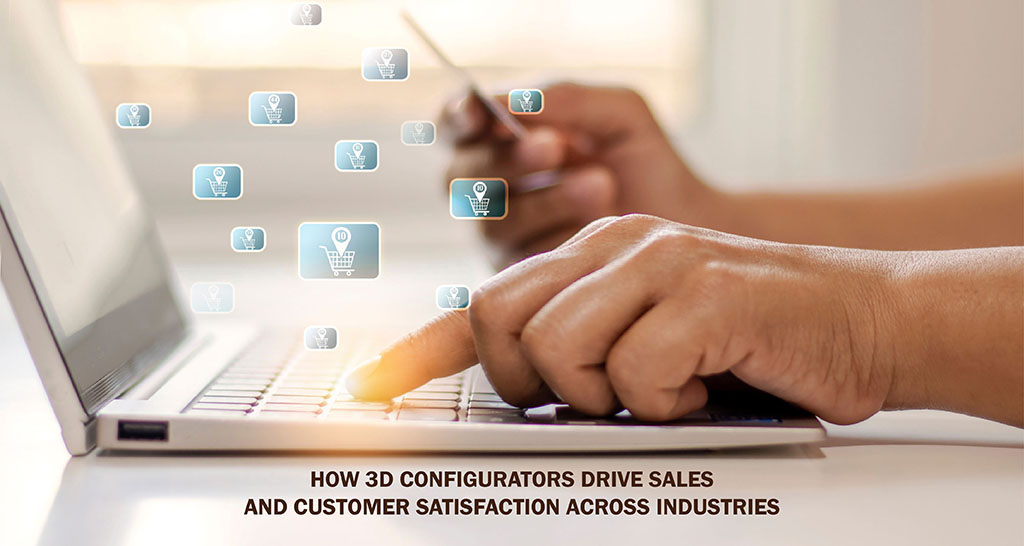In the not-so-distant past, 2D images were the go-to for showcasing products. Fast-forward to today, and the scene has dramatically shifted towards 3D visualisation. This transformation is primarily due to the rise of 3D configurators. These tools allow customers to customise products in real-time, offering a more engaging and interactive shopping experience.
The leap from flat, static images to vibrant, customizable 3D models captured consumers’ imagination while significantly boosting sales and customer satisfaction across various industries.
In this article, we’ll explore how they’re changing the game by enhancing the way we shop and interact with products. Ultimately leading to happier customers and healthier bottom lines.
Read on!
Transforming Customer Experience
Transforming customer experiences in today’s market is all about making shopping not just a task but a journey of discovery and creativity. They are revolutionizing the way businesses engage with their customers by:
Personalization at Scale:
3D configurators empower customers to create products that are tailored to their preferences, making them feel uniquely valued. For example, a shed contractor utilizing a 3D shed configurator allows customers to design their own sheds and carports. In addition, it also provides price quotes based on their specific designs. It is a win-win; customers enjoy a personalized shopping experience, while business owners can efficiently cater to individual needs at scale.
Immersive Visualization:
The integration of virtual and augmented reality (VR/AR) with 3D configurators brings products to life before the purchase is made. This feature enables customers to visualize products in their own space, offering a “try before you buy” experience. It especially benefits businesses whose products or services, like interior design or real estate, require a spatial understanding.
Educational Engagement:
They serve as interactive learning tools that help customers make informed decisions. They learn about the product features, materials, and options available through the customization process. This informative interaction ensures customers are confident in their choices, enhancing satisfaction.
Driving Sales and Enhancing Satisfaction
Reduced Return Rate
By allowing customers to see and customize their products in detail before purchasing, these tools significantly lower the chance of mismatches between expectations and reality. For example, if you buy a custom-designed piece of furniture online, you’re less likely to return it because you know exactly what you’re getting. Studies show that interactive 3D visuals can significantly reduce return rates. Thus making a huge difference for businesses in reducing costs and increasing customer satisfaction.
Increased Conversion Rate
Shoppers love interactive experiences. When customers can engage with a product through a 3D configurator, they feel more connected and confident in their purchase decisions. This connection can boost conversion rates significantly. Moreover, having an increased conversion rate also helps improve SEO performance, such as click-through rates.
Brand Loyalty
The unique and personalized shopping experience fosters a deeper emotional connection between the customer and the brand. When customers invest time in customizing a product to their liking, they’re more likely to feel a sense of attachment to it and, by extension, the brand. This emotional investment translates into repeat purchases and strong brand loyalty, setting the foundation for a long-term customer-brand relationship.
Cutting-Edge Features of Modern 3D Configurators
Real-time Collaboration
They allow multiple users to work on a design simultaneously, regardless of their location. This feature is especially useful for teams in different places who need to collaborate on customizing a product or design in real time. It speeds up the decision-making process and enhances teamwork.
AR/VR Extensions
Augmented Reality (AR) and Virtual Reality (VR) technologies take these tools to the next level by enabling users to place virtual products in real-world environments or immerse themselves entirely in virtual spaces. This means customers can see how a piece of furniture looks in their room before buying or experiencing a vehicle’s interior firsthand, making the shopping experience more interactive and realistic.
Cross Platform Integration
They work seamlessly across various platforms, including smartphones, tablets, and computers. This flexibility ensures that customers can access these tools from their preferred devices, providing convenience and enhancing user engagement. Businesses benefit from wider reach and accessibility, appealing to a broader audience.
These features make modern them a powerful tool for businesses. They offer immersive, collaborative, and accessible experiences that cater to the evolving needs of consumers and teams alike.
Closing Lines
3D configurators are revolutionizing customer engagement and sales across various industries. By offering personalized experiences, immersive visualization, and educational insights, these tools boost sales and forge deeper connections between brands and their customers. As technology advances, the potential of these tools to transform the shopping experience continues to grow. Thus, it sets a new standard for how businesses interact with their audience and shape the future of retail.

